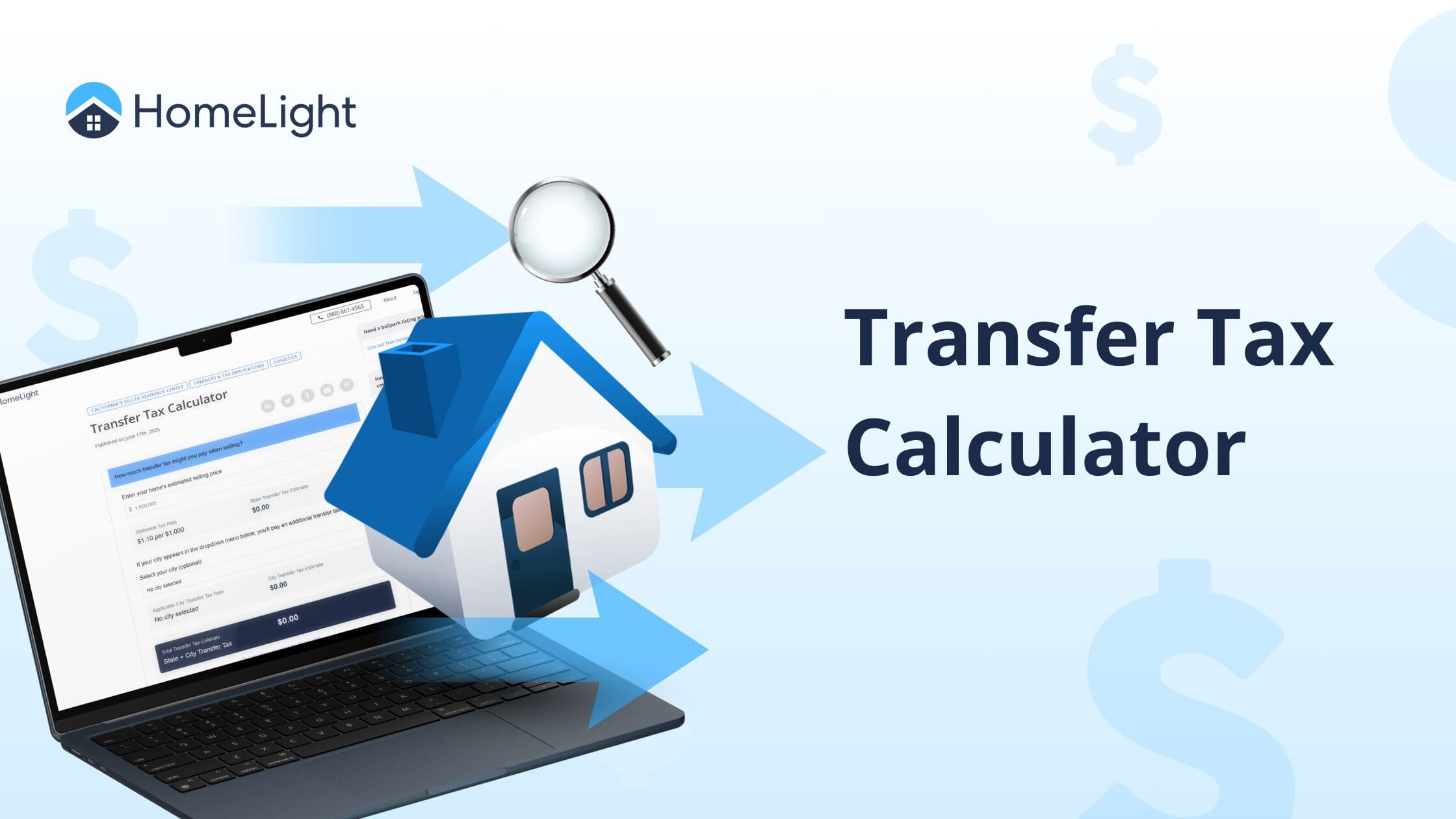
“How do I sell my house?” you wonder as you size up your cluttered kitchen, dirty bathrooms, and the decals of your kid’s favorite cartoons plastered to his bedroom walls. Somehow, you’ll need to get the entire place looking presentable and find a buyer, preferably fast. You aren’t sure how much longer you can work remotely without a dedicated home office, or maybe a new city awaits. It’s hard to know where to start. And some factors will be out of your control, like how fast your market moves and whether it’s a hot location to buy right now. For starters, take a look at this overview: it’ll help you pick a method to sell and navigate the steps from messy house to moving trucks in the driveway. We also cover common mistakes to avoid as a seller and provide a handy pre-sale checklist of action items you can take on right away. Before you embark on the process of selling your home, you’ll need to decide how you’re going to do it. You have a few options to choose from: hire an agent, do it yourself, or request a cash offer (you can do this online by working with an iBuyer). Which route you choose depends on your individual needs and goals. Selling a house is a huge and complex undertaking, so it makes sense that 90% of recent home sellers hired a real estate agent to list and market their home. A great real estate agent will: Sellers pay an average 5.8% commission to enlist the services of a listing agent, a cost that is typically split 50/50 with the buyer’s agent. A portion of these commission fees goes directly toward marketing the seller’s home via professional photography, online promotion, and open houses, while the agent’s expertise throughout the selling process helps to generate the strongest offers and maximize home value. HomeLight makes it fast and easy to search for a top local real estate agent who knows every square inch of your ZIP code, specializes in your property type, and has a history of positive reviews. Tell us a bit about your home and how soon you plan to sell, and we’ll provide up to three recommendations for quality real estate agents in a matter of minutes. Our service is free for sellers to use.
Some sellers prefer to sell without a real estate agent’s assistance and list their home as for sale by owner (FSBO). Most FSBO sellers already have a buyer in mind such as a friend, neighbor, or relative, and therefore may not need the full-service support of a real estate agent. But keep in mind that if you go the DIY route, you could be leaving money on the table: the median selling price for FSBO homes in 2020 was more than $24,000 lower than for homes sold with the assistance of an agent. If you haven’t found a buyer, you’ll be responsible for the tasks an agent would normally handle. These include but are not limited to: “Did not want to pay a commission or fee” is the most common reason for listing as FSBO among sellers, cited by 41% of FSBO sellers who knew their buyer and 58% who did not already know their buyer, according to the National Association of Realtors (NAR). But FSBO sellers should be aware that they’ll still need to pay non-commission closing costs, including settlement fees, transfer taxes, and attorney fees. If a buyer uses an agent, a seller may also be asked to pay all or part of the buyer’s agent commission. Selling a house the traditional way — even if you hire an agent — is a ton of work. If you’re in a hurry to sell due to a new job, financial hardship, or any other reason, you could request a cash offer online through an iBuyer (a company that purchases homes in cash, mostly or entirely online). When you sell to an iBuyer, you skip staging and showings and will likely close faster due to the lack of lender involvement. Consider starting with HomeLight’s Simple Sale platform — we provide cash offers for homes in almost any condition and allow sellers to close in as little as 10 days. The process is fast and straightforward: fill out a questionnaire to tell us a bit about your home and how soon you plan to sell. We’ll provide you with a cash offer within 48 hours. If you choose to accept it, you can pick your move-out date with some flexibility. Once you’ve decided how to approach selling your home, it’s time to roll up your sleeves and dive in! While the details of every seller’s journey are unique, you can probably count on completing the following steps from start to finish: Before you put your home up for sale, crunch a few numbers. A free home value calculator such as HomeLight’s Home Value Estimator can help you estimate how much your house is worth. You’ll also want to calculate your equity — the value of your home minus the total principal owed on your mortgage, if applicable. From there, you can use the HomeLight Net Proceeds calculator to get a rough idea of how much you’ll earn from the sale after expenses and closing costs. Begin the search for an agent about three months before you plan to put your house on the market. Three months is the sweet spot for most sellers. It leaves you enough time to consult with your agent about any pre-sale home improvements, but is still a short enough window to reflect current market conditions (which can change quickly). There are millions of agents out there, but an agent-matching platform such as HomeLight can help you choose the best one for your needs. To see whether an agent is the right fit, look at their: When you go through HomeLight to meet your real estate agent, you’ll be able to see their number of transactions isolated by year. In addition, our transaction heat map drills down into the number of transactions at the neighborhood level. To get even more granular, you can do a search for your location using the “Transactions Near You” feature. Working with a top agent matters: according to HomeLight transaction data, the top 5% of agents sell homes for as much as 10% more than the average agent. Ernst encourages sellers to order a home inspection prior to listing their home — especially if your house is on the older side. “An inspection will alert you to any serious defects with the house that would cause a buyer to walk away,” he says. In addition, it gives you the opportunity to make any needed minor repairs before listing the home, which could save you time and money later on. A real estate agent will provide a comparative market analysis (CMA) based on recent sales in your area to help determine a competitive asking price for your home. Other factors that go into pricing a home include the condition of the house, the current level of supply and demand in the market, and the home’s specific features and amenities. When you show your home to prospective buyers, you don’t want them to feel like they’re walking into someone else’s house. Decluttering is especially important, says Ernst. “If you haven’t touched it in two years, you’re not gonna touch it at the next house — so get rid of it.” He also advises clients to pre-pack any items they’re ready to move out of the house before showing it. You can work with a moving and storage company that will provide reusable containers, pick them up after you’ve packed them, and store them until you’re ready to move into your new home. Go through and do a deep clean. Beyond the typical dust, mop, and scrub routine, be sure to wipe down baseboards, clean ceiling fans, and purge old food from the fridge and pantry. If you’re strapped for time (or really hate to clean), hiring a professional cleaning service can be a worthwhile investment. You want a buyer to see your home as a blank canvas waiting to be transformed into their perfect living space. But that can be a challenge if you painted the dining room walls maroon or stenciled pastel rocking horses in one of the bedrooms. Choose a neutral color, like Pure White from Sherwin Williams or Benjamin Moore’s Revere Pewter, and give your interior walls a fresh coat of paint. To dazzle buyers the moment they lay eyes on your home, work on maximizing curb appeal. From quick and easy tasks like putting down a new welcome mat, to bigger projects like mulching and landscaping, make a home stand out before the prospective buyer walks in. Your work is likely to pay off: The nation’s top agents estimate investing $3,000 in curb appeal can result in nearly $12,000 in resale value, according to HomeLight’s most recent industry trends survey. After your home is cleaned up and cleared of clutter, your agent will bring in a photographer to take photographs with the right angles and lighting to make your house look gorgeous online. While your agent puts the listing on all the major websites, you’ll need to stay in touch about showing requests and be ready to do quick clean-ups at the home before viewings. Hopefully, it’s within a few days or weeks that you see one or or multiple offers come through. Before accepting the highest offer you receive, be sure to weigh all the factors that contribute to the strength of the contract. For example, a buyer who’s paying cash eliminates the risk of the financing contingency delaying the closing. But a buyer with financing may pay a little more. A study from the University of California, San Diego found that mortgaged homebuyers pay an 11% premium compared to all-cash buyers in residential real estate transactions. The closing date is another detail to review with careful consideration. Accepting an offer from a buyer who wants to close before you’re ready to move out may create added stress. Once you’ve accepted a buyer’s offer, your home will need to pass inspection in order to complete the sale. If you ordered a home inspection before you listed the house, you shouldn’t have to worry about any surprises now. But if the inspection uncovers issues like water damage, electrical problems, or pest infestations, you’ll have to address them before closing. If your buyer is using financing to purchase the home, there will also be a home appraisal. Once the inspection, appraisal, and other paperwork are complete, all that’s left to do is move out before closing. Congratulations — you just sold your house! While it’s not unusual to encounter a hiccup or two during the selling process, you’ll want to avoid these common (and in some cases, costly) mistakes: Now that you can visualize the steps to sell your home, use this checklist of pre-sale tasks you can tackle right now to start making progress: Selling a house is rarely easy. But the financial reward is almost always worth it, and you can ease the burden by hiring a great real estate agent (HomeLight is here to help with that!) In addition, there’s always the option to request a cash offer and skip staging and repairs. If you take it one step at a time and avoid some common mistakes, soon you’ll be ready to sign the final paperwork, hand over the keys, and move on to your next adventure.Choose the best approach to selling your home
Option 1: Hire a top local real estate agent
How do I find a real estate agent?
Option 2: FSBO (For sale by owner)
Option 3: Request a cash offer
Follow these 11 steps to sell your home
1. Run some back-of-the-napkin math
2. Hire an amazing real estate agent
An inspection will alert you to any serious defects with the house that would cause a buyer to walk away.
3. Order a home inspection
4. Use a market analysis to set a price
5. Declutter your home
6. Deep clean each room
7. Paint interior walls a neutral color
8. Kick your curb appeal up a notch
9. List your home and show it off
10. Evaluate, negotiate, and accept an offer
11. Close the deal
Avoid these common mistakes when selling your home
Use this checklist to get started right away



